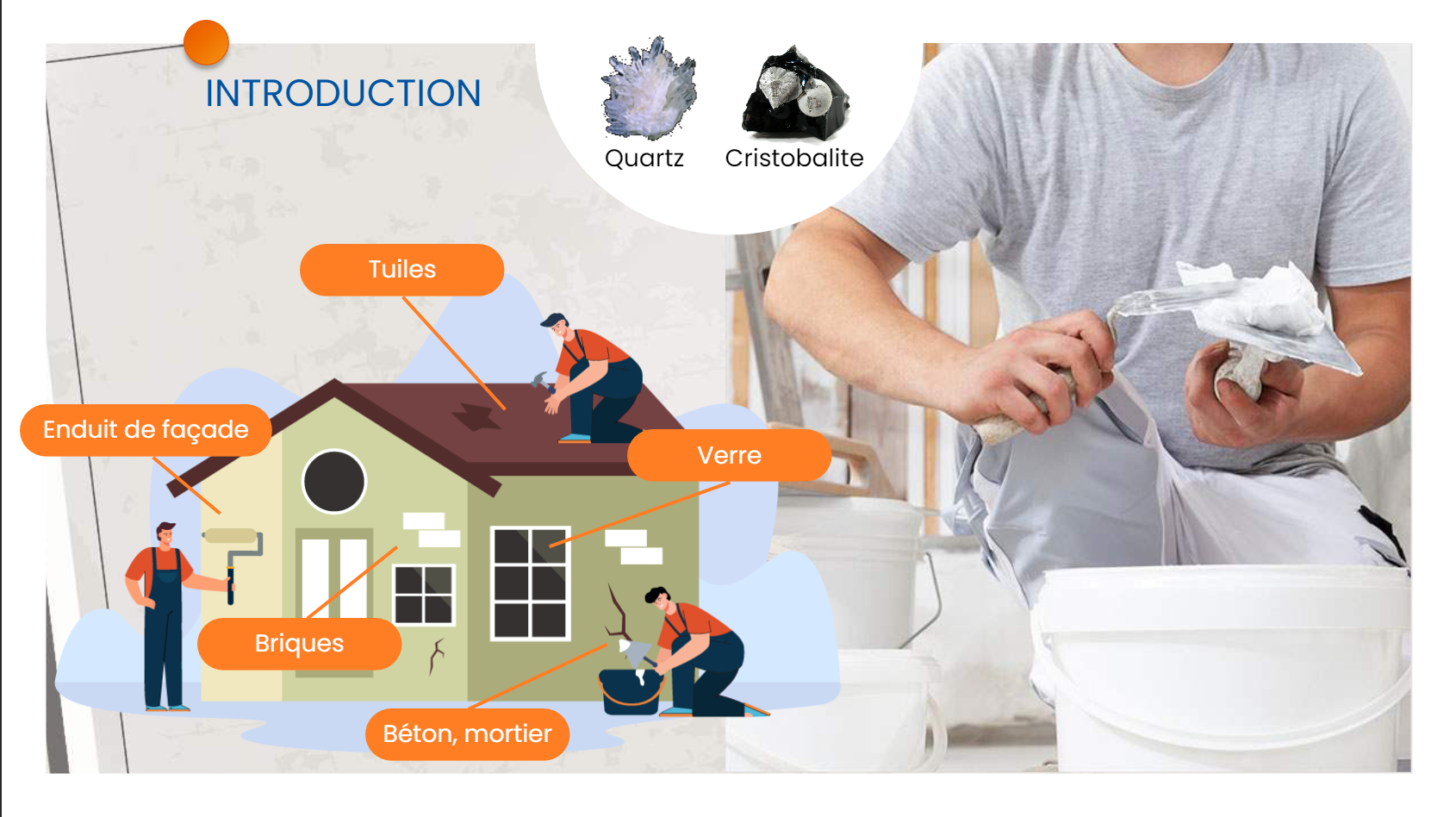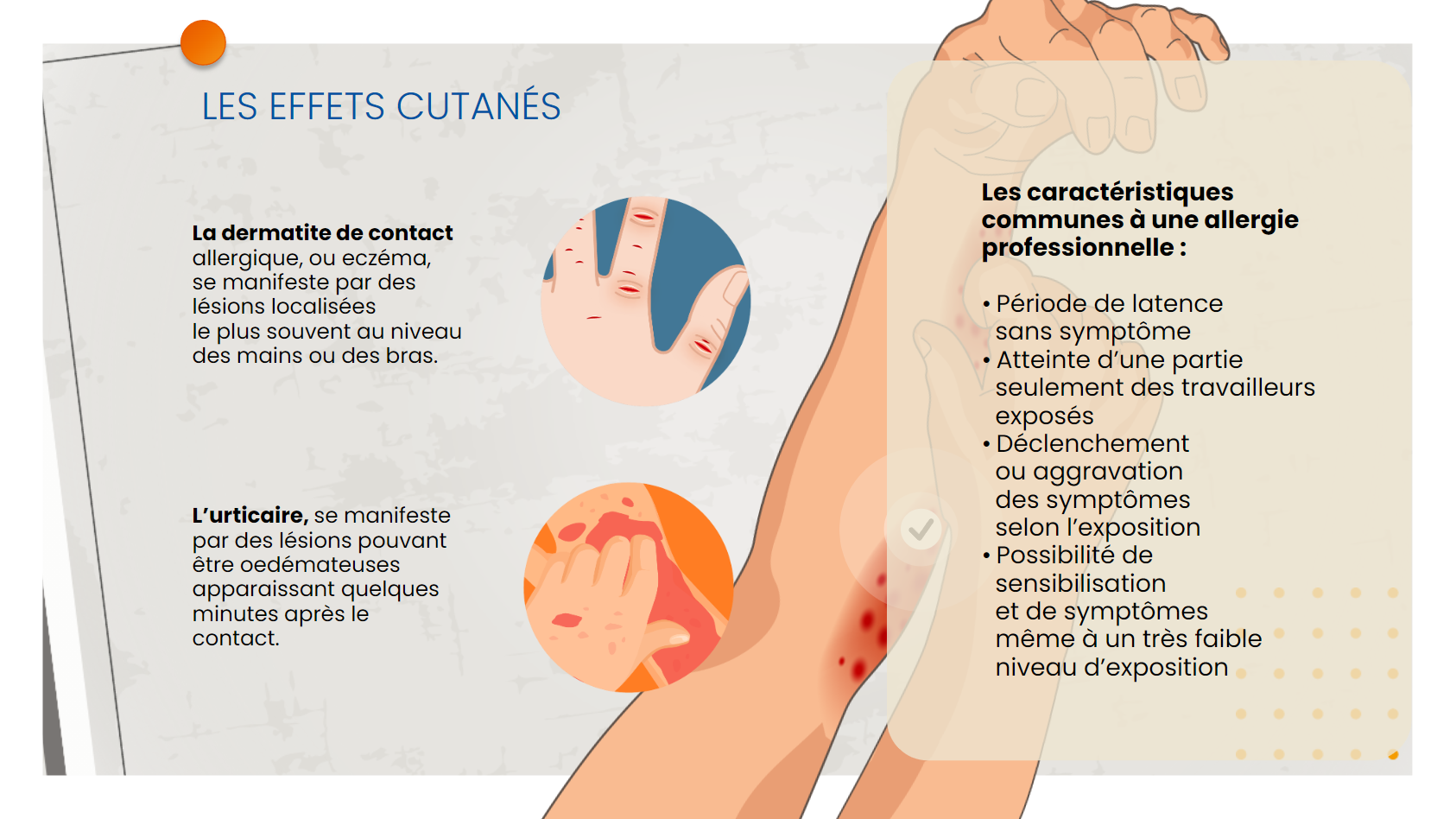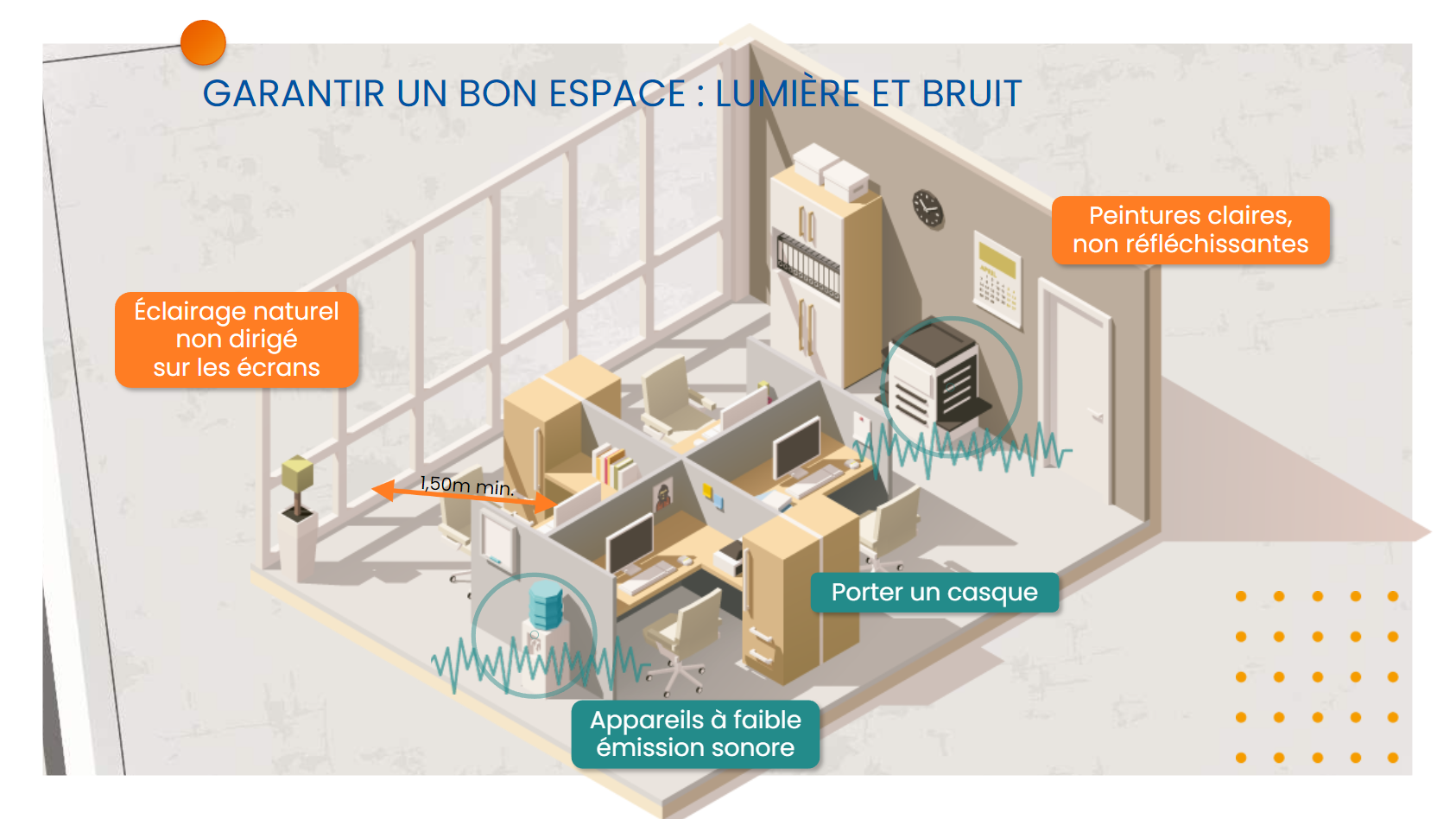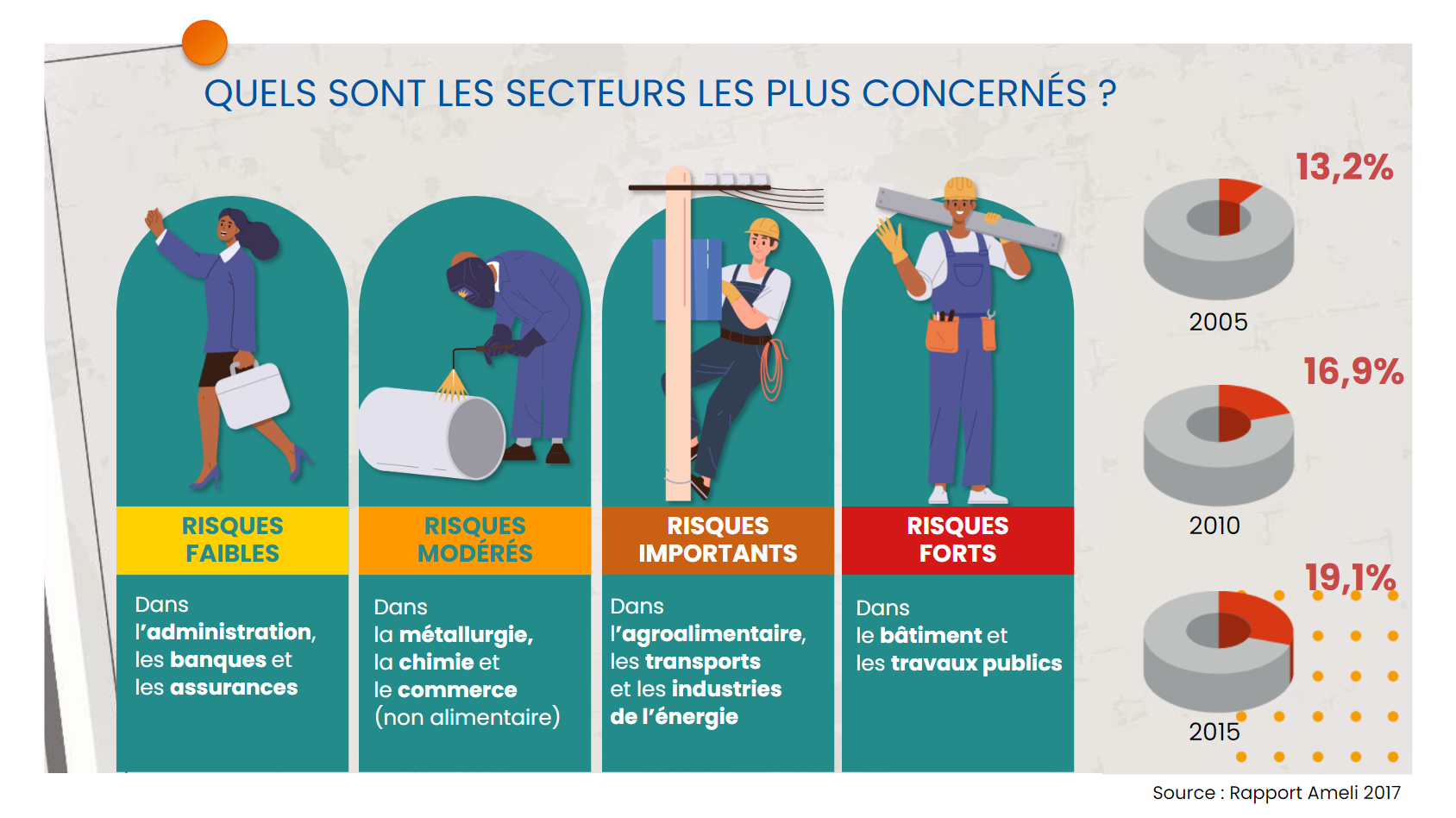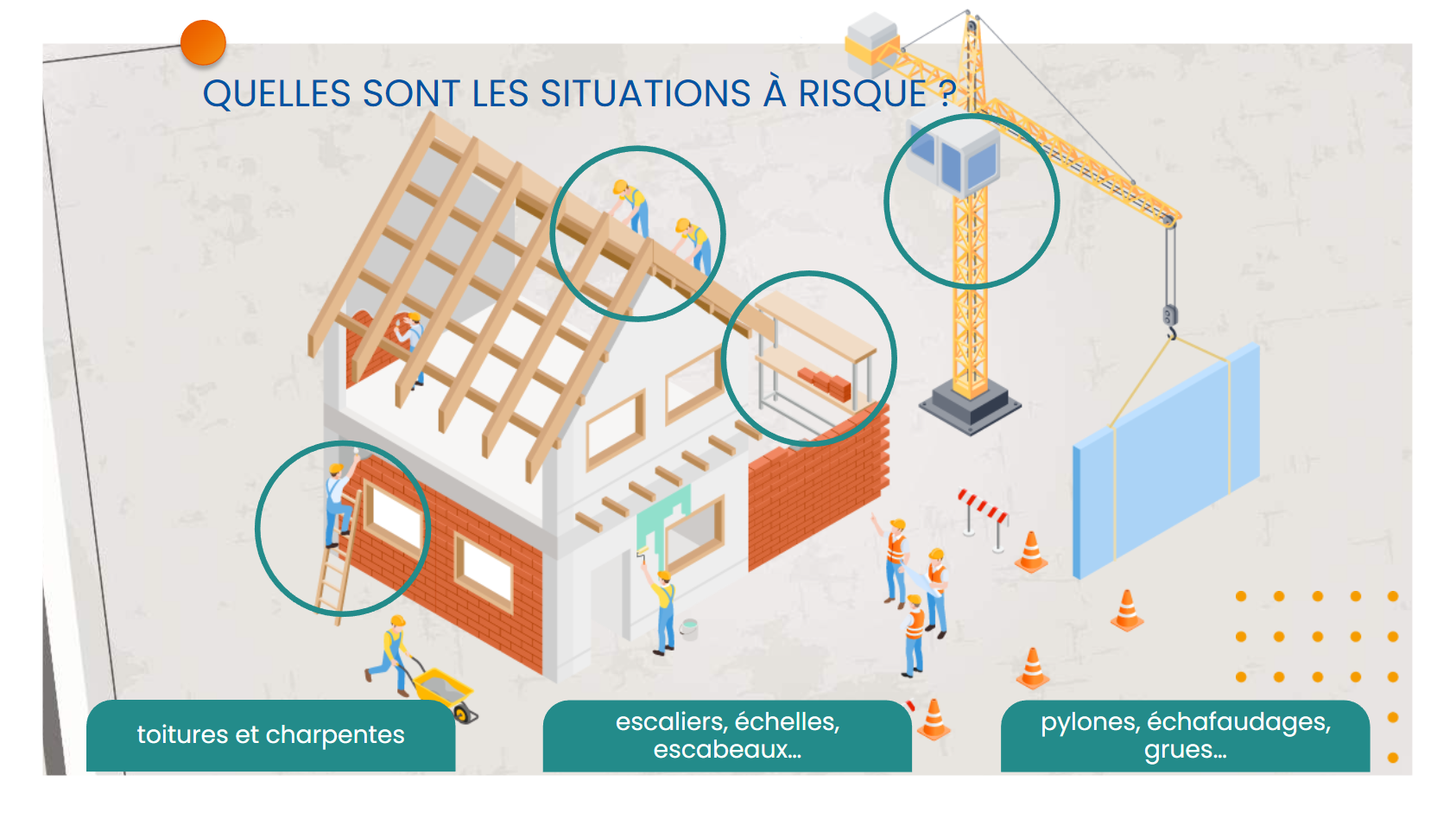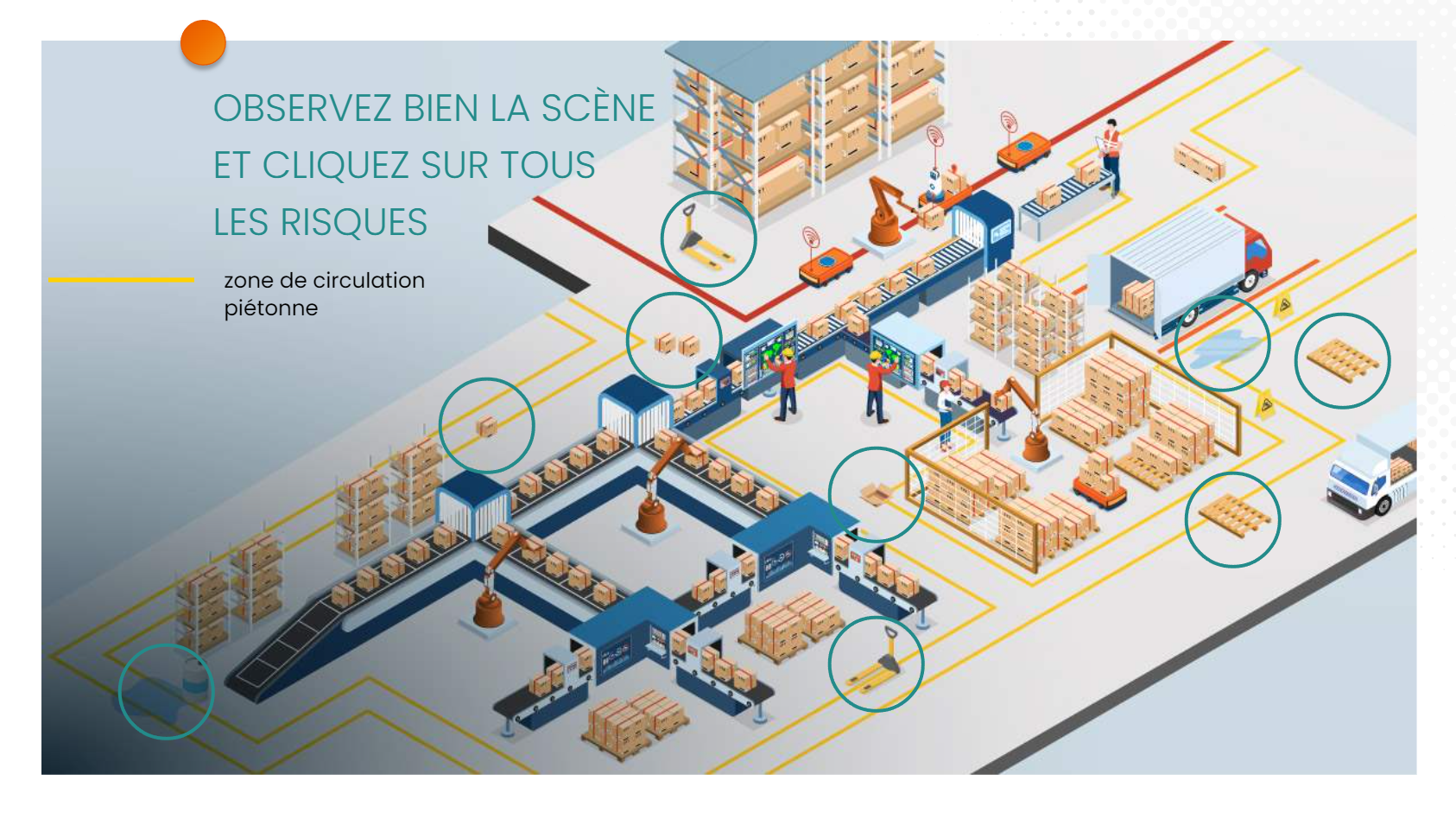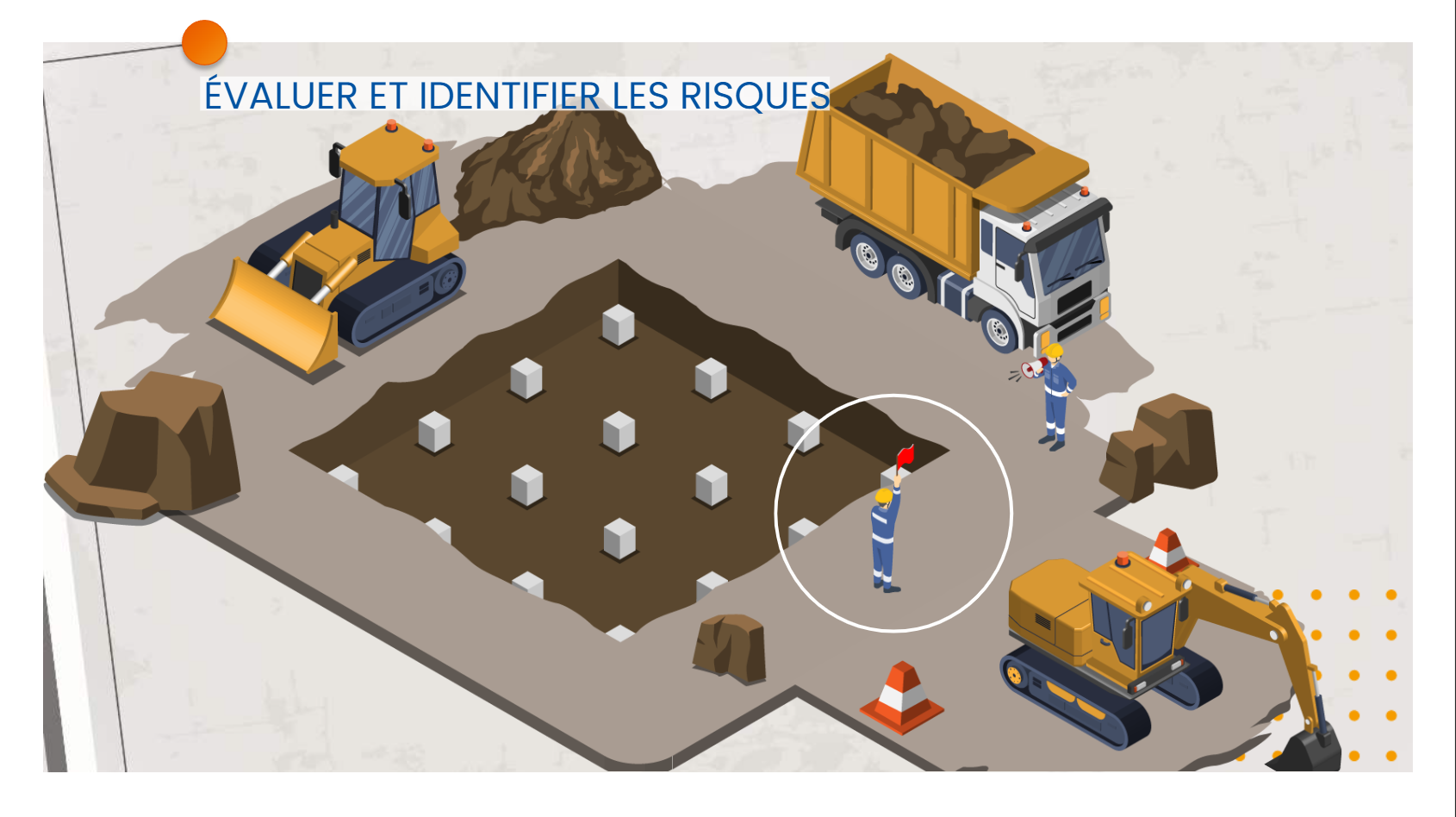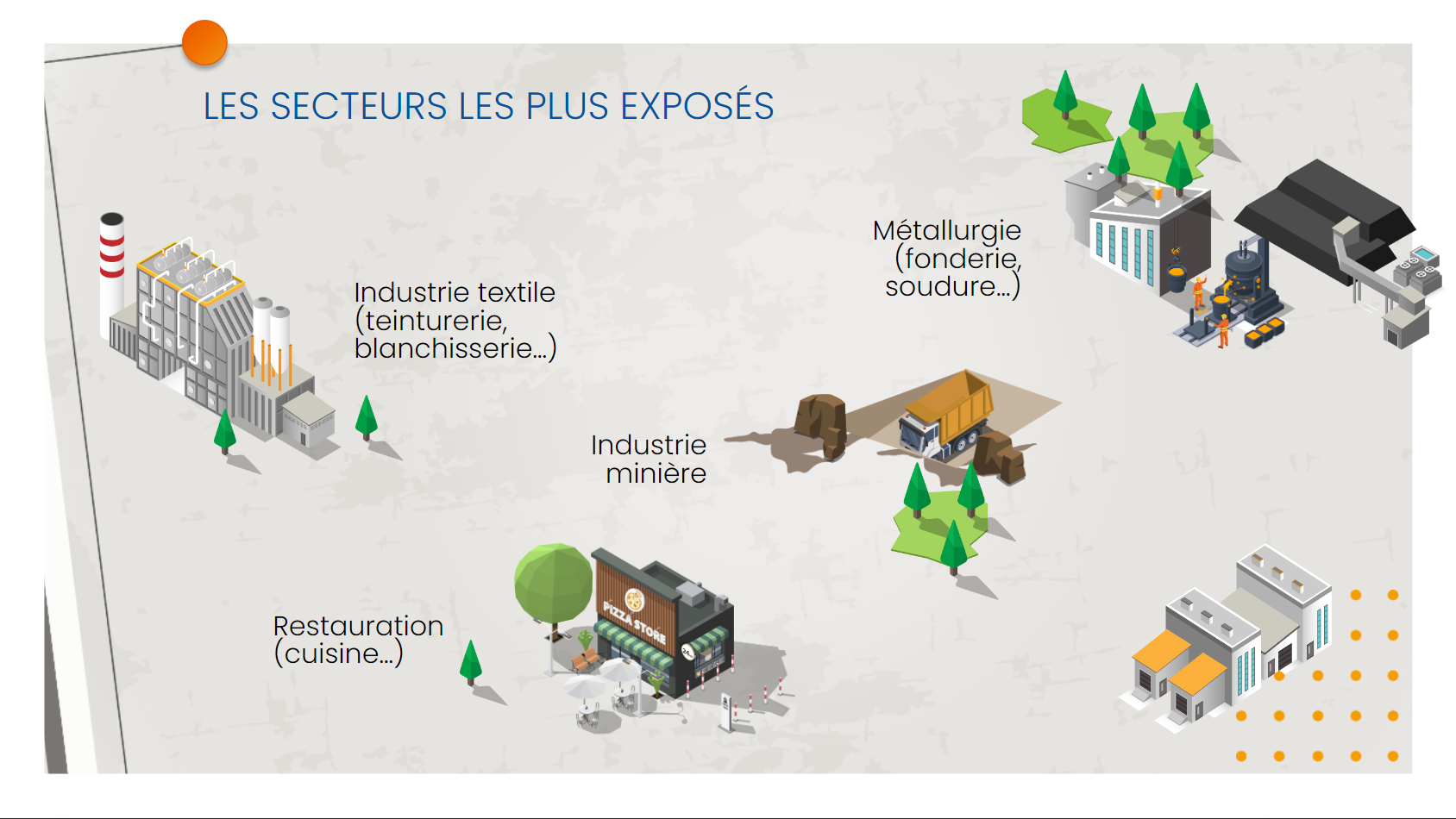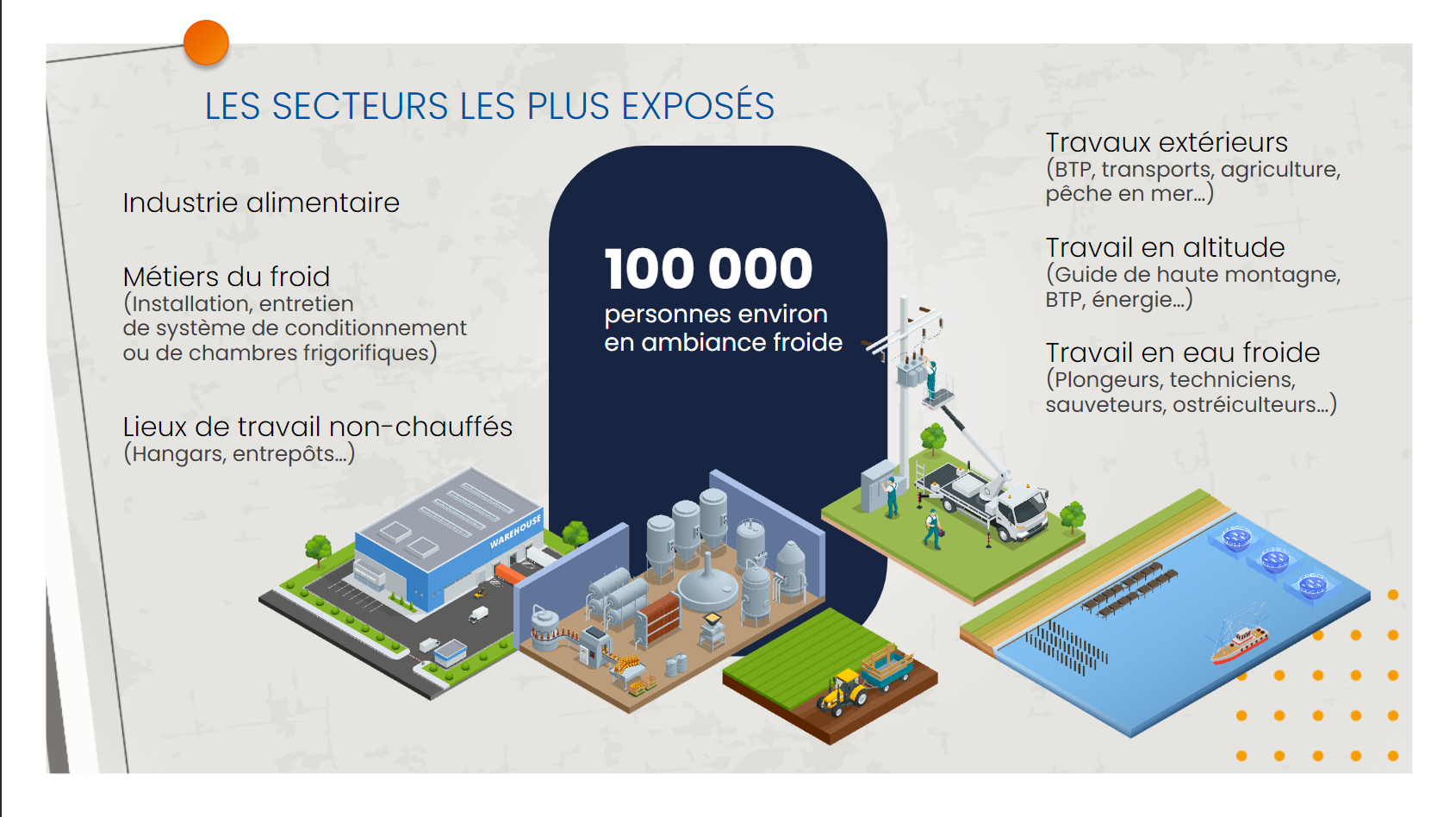Work likely to expose employees to the inhalation of crystalline silica dust is present in the majority of manufacturing and construction industries. However, the health effects of this mineral can be particularly serious and disabling (notably silicosis and lung cancer). It is therefore appropriate to reduce occupational exposure to crystalline silica to the lowest possible level. This module on the risks associated with crystalline silica dust concludes the training on dust risks. It complements general prevention and wood dust.
Continue readingElearning module “Sensitizing agents”
Exposure to sensitizing agents can cause occupational allergies, whether skin or respiratory. These conditions frequently require job adjustments, reclassification, or career redirection for affected workers. It is therefore essential to prevent these situations. In this module, you will discover the risks associated with exposure to sensitizing agents.
Continue readingElearning module “Exposure to zoonoses”
This module offers training on zoonoses, infectious diseases transmissible from animals to humans, caused by biological agents such as bacteria, viruses, parasites, prions and microscopic fungi. The professional sectors concerned include breeding, animal trade, zoos, slaughterhouses, forestry work, rendering, environmental professions, customs and taxidermy.
Continue readingElearning module “The risks associated with prolonged work on a screen”
Spending long hours in front of a screen can lead to health problems. Preventing these risks involves taking measures regarding the layout and layout of the workstation, the choice of equipment, the presentation of information on the screen, as well as the organization of work. This module will offer you good practices to avoid pathologies linked to restrictive postures.
Continue readingElearning module “Low back pain”
Low back pain manifests itself as pain which can take different forms such as the feeling of heaviness, stiffness, acute pain, blockage (lumbago), burning or tingling. They can also radiate to the buttocks, the back of the thighs and up to the knees. Low back pain can be occasional, recurrent or chronic. In most cases, these symptoms persist for a few days to a month. This module presents the effects and risk factors linked to low back pain.
Continue readingElearning module “Falls from height”
Working at height, whether on a frame, roof, pylon, platform or scaffolding, carries risks, whether it is temporary or regular work. Falls with a difference in height represent the second cause of fatal accidents at work, just after traffic accidents. In order to prevent these falls, it is essential to intervene at different levels, whether by improving the design of structures and equipment, adapting workstations or modifying operational procedures. This module will allow you to understand the correct reflexes to avoid falls with a difference in height.
Continue readingElearning module “Falls on the same level”
Work accidents linked to slips, trips, missteps or loss of balance, commonly called “level” falls, are still too often considered inevitable and of little consequence. However, contrary to this perception, they represent one of the main causes of accidents in the professional environment. These incidents can have serious, even fatal, repercussions for the employees involved. All sectors of activity are likely to be affected by this type of accident. This module will allow you to understand the right reflexes to avoid falls of all kinds.
Continue readingElearning module “Movement disturbances”
This module presents the often underestimated risks associated with accidents such as trips, bumps, trips and slips in the workplace. Although considered minor, these incidents can have serious or even fatal consequences. They result from a combination of varied factors, environmental, material, individual and collective, as well as organizational, disrupting movement and potentially causing injury. Identifying these factors is crucial for adapting the work environment and organizational methods to ensure employee safety.
Continue readingElearning module “Heat risks”
A large number of occupations require workers to operate in environments where temperatures are high: this includes dye works, laundries, kitchens, mines, blast furnaces, foundries, as well as welding shops. Furthermore, some people work outdoors and may be exposed to heat, especially during heat waves in summer. These thermal conditions can have serious consequences on health and increase the risk of workplace accidents.
Continue readingElearning module “Risks linked to cold”
Employees often encounter cold, whether natural or artificial, in various work settings such as cold storage, walk-in coolers, or outdoor work during the winter. This direct exposure to cold poses risks to the health of workers and also increases the risk of accidents. When the ambient temperature drops below 5°C, increased vigilance is necessary. The most effective preventative measure is to avoid or limit the time of exposure to cold. This module presents environments marked by very low temperatures as well as the consequences that this can have on health.
Continue reading